Sony Xperia L2 review
The Sony Xperia L2 illustrates an issue many established smartphone makers have been facing for a while now. How do you create a truly compelling budget handset?
Samsung seems to have gone the path of making phones that look and feel a bit like yesterday's flagship phones (like the Samsung Galaxy A3), with only a certain amount of success.
Motorola has been the one unqualified winner here, with the Moto G5 standing as the latest in a long line of highly usable, well built, bloat-free phones for around £150 (roughly $200/AU$260).
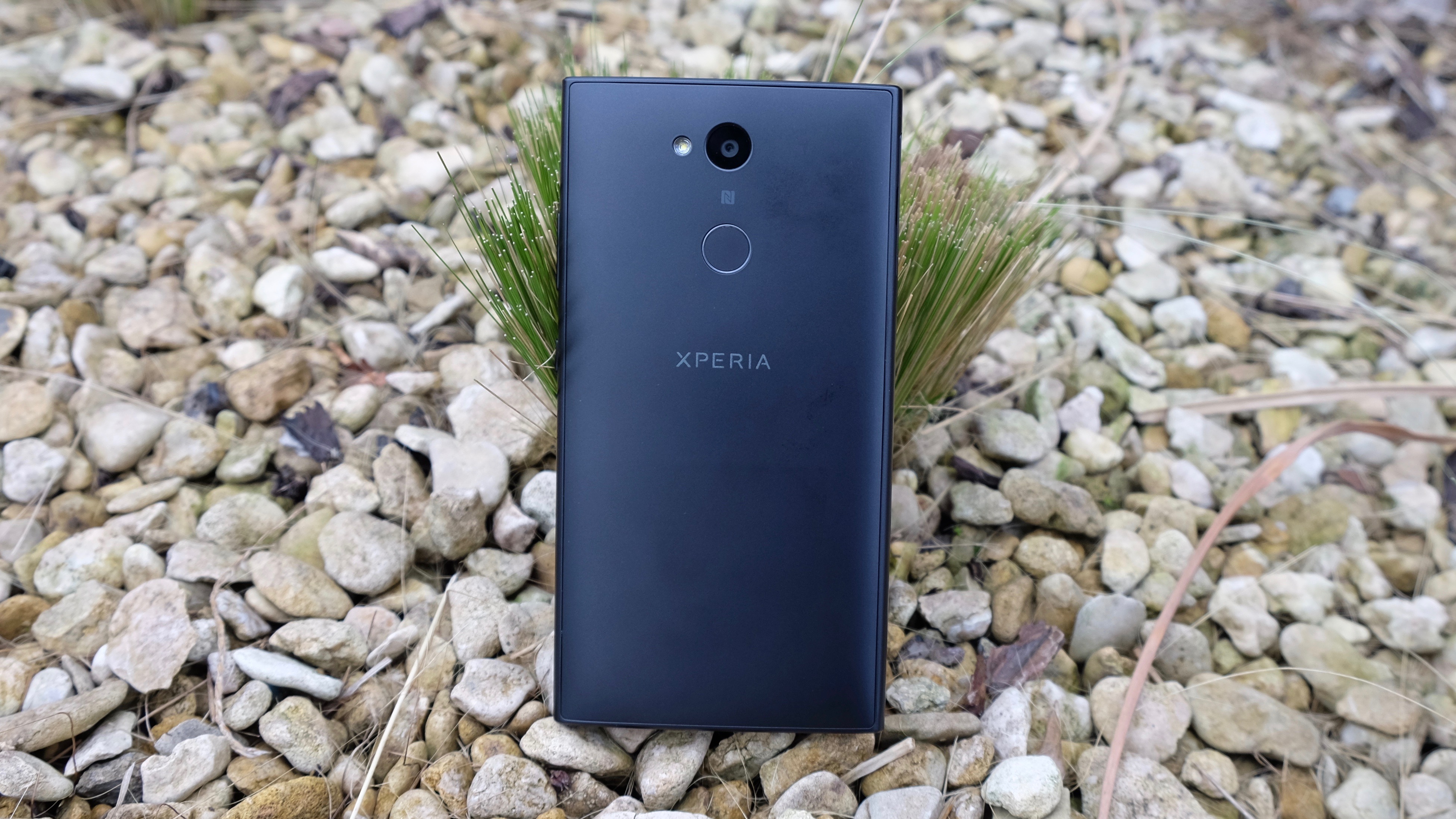
By contrast, it's a little tricky to see what Sony's approach is. Last year's Sony Xperia L1 was a big slab of not very much at all; a beige phone (metaphorically speaking) with no defining features to speak of. Unfortunately, the Sony Xperia L2 follows suit.
In the US the price of the Sony Xperia L2 is set at $249.99 (about AU$310), and we're seeing it online for around £200 in the UK. That's a bit of a problem given the competition and what they have to offer compared to the L2 for the same if not less money.
Difficult to put your finger on
- Takes sound seriously
- Includes a wide-angle selfie camera
A glance at the Sony Xperia L2's official web page gives us some insight into the Japanese company's vision for this phone.
It leads with a mention of the Xperia L2's "super wide selfie" capabilities, which are enabled by the phone's 8MP 120-degree front-facing camera. We'll grant them this one - the L2 does indeed offer a much wider view when taking self shots.
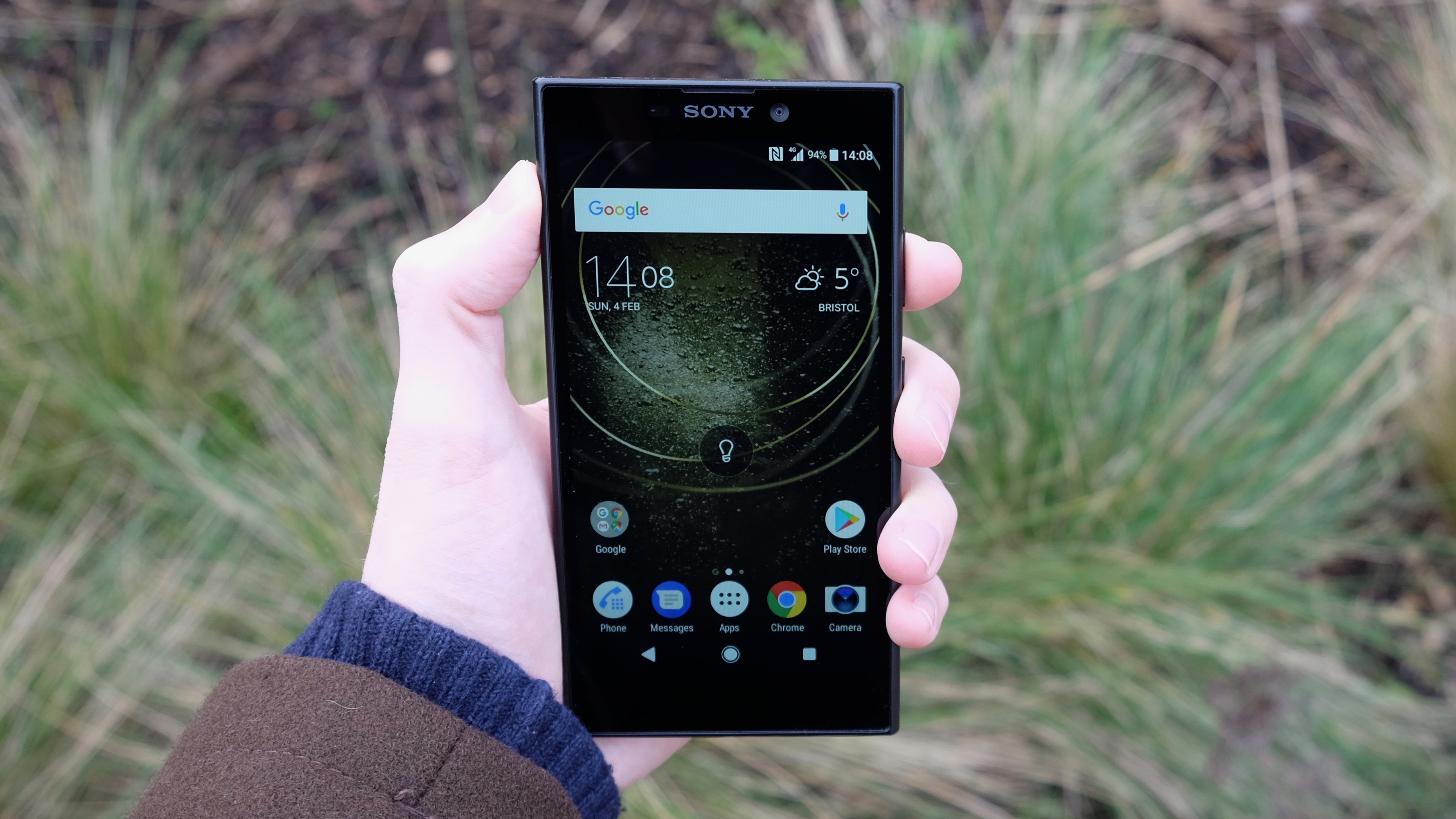
This means that you can get far more people and scenery into your selfies. Practically speaking, we found that you could get the kind of shot that would ordinarily require a full-arms-length pose while holding the phone normally.
Those who have strained necks and shoulder muscles in the pursuit of a properly framed selfie should take note.
Indeed, capable photography seems to be Sony's biggest selling point with the Xperia L2, as it next mentions the phone's 13MP rear camera. This is perhaps an understandable angle to take, given that Sony is a major camera maker, and also supplies many of the camera components used by rival smartphone manufacturers.
We'll go into the camera's performance in more detail a little later, but right now we'll say that the results aren't particularly outstanding. It has all of the issues we've become familiar with at this price point.
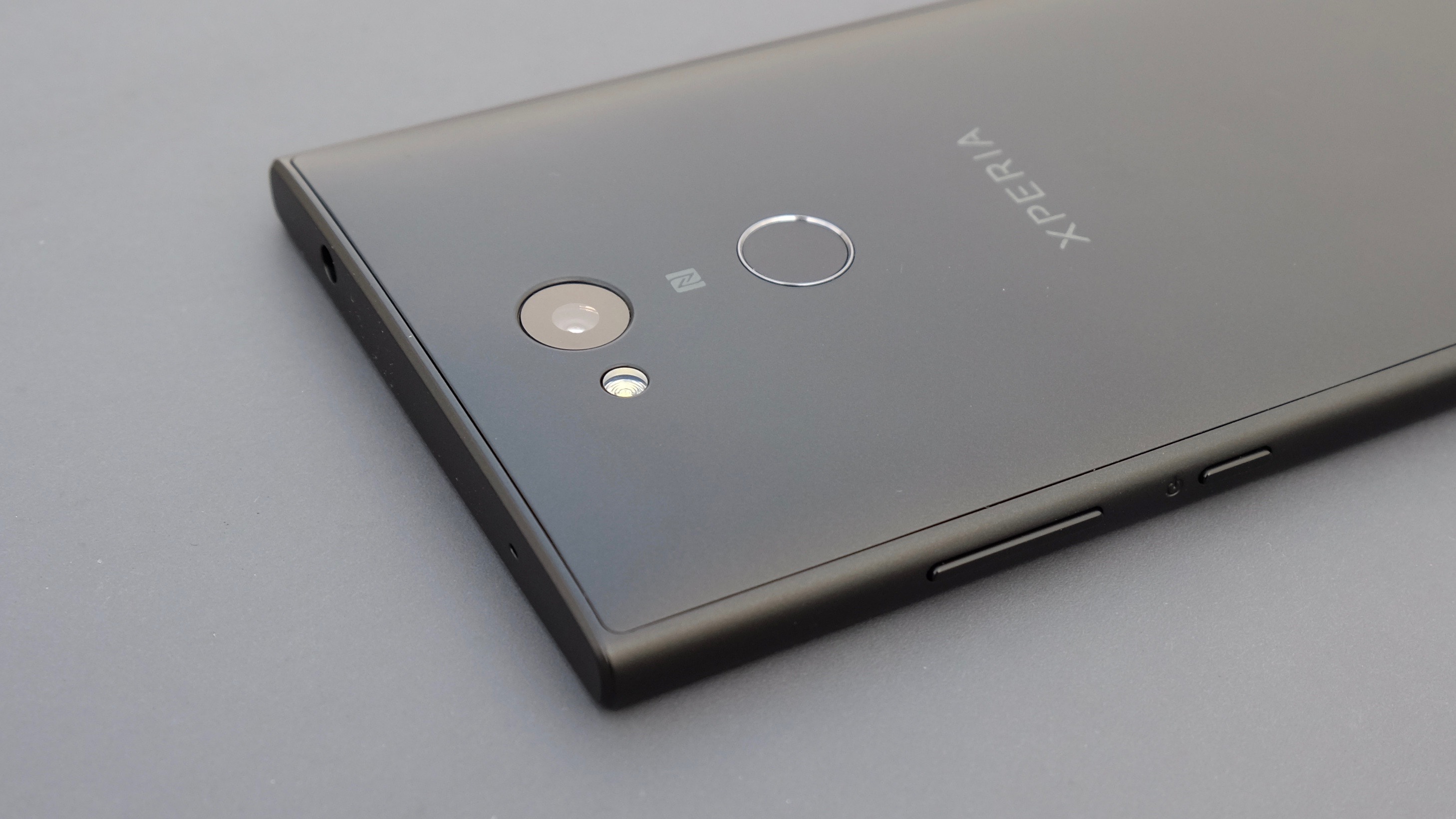
One key feature that was conspicuous by its absence in the Sony Xperia L1 was a fingerprint scanner, so it's good to see that Sony has addressed that with the L2.
It's located on the back of the phone in a reasonably comfortable position, just below the camera. However, it's not the quickest or the most reliable example we've used even at this price point.
We found that it would quite often fail or secure only a partial fingerprint - not all the time, but enough to lead to frustration and a crucial lack of trust in the system.
Sony also makes mention of the fact that the Xperia L2 uses ClearAudio+. It's far from a new thing, but Sony claims that this "special sound field" will detect the music that's being played and automatically adjust the sound settings accordingly.
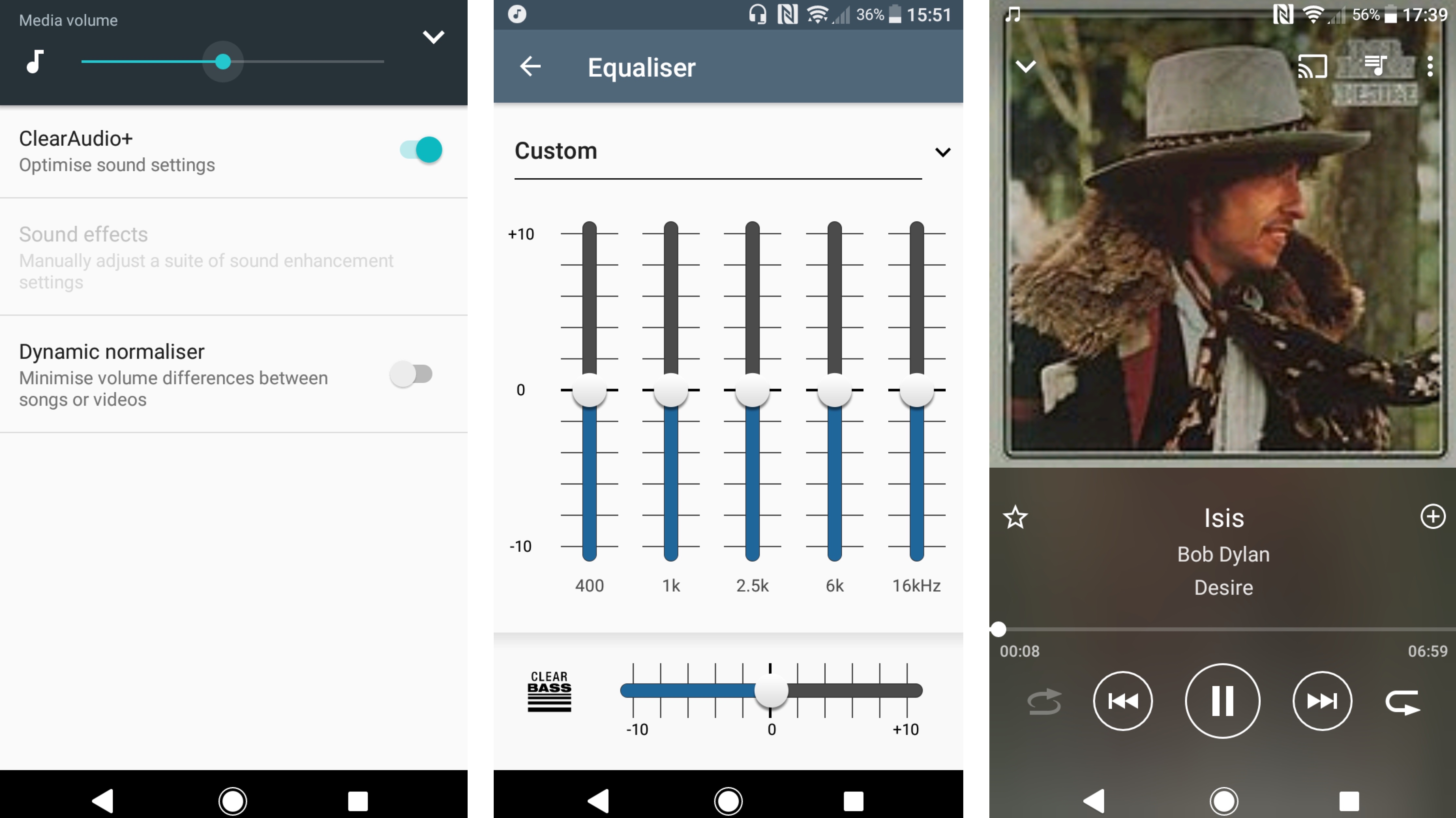
It certainly brightened up the sound of Four Tet's New Energy album when we streamed it through Google Play Music, though the sharper sound was less welcome (to these ears) in a downloaded MP3 of Bob Dylan's Desire. Whether this form of digital processing will be to the liking of purists or not we can't be sure, but it's a nice option to have.
Talking of sound purists, Sony also offers a full equalizer option for personal tweaking, with a Clear Bass option enabling you to play with the low end.
We can't think of many other $250/£200 phones that take sound this seriously, so audiophiles on a budget might be more interested in the L2 than the average customer.
Design and display
- Hefty all-plastic body
- 5.5-inch 720p IPS LCD screen
- USB-C and 3.5mm socket
Sony has always made phones that revel in a certain angular sturdiness, and the Xperia L2 doesn't buck that trend. Flat top and bottom edges and sharp right-angled corners suggest that you could really hurt someone if you swung this phone around in a crowded bar.
The L2 is a seriously hefty bit of kit, just like last year's Sony Xperia L1. It's a belt-busting 9.8mm thick, and weighs a staggering (almost literally) 178g.
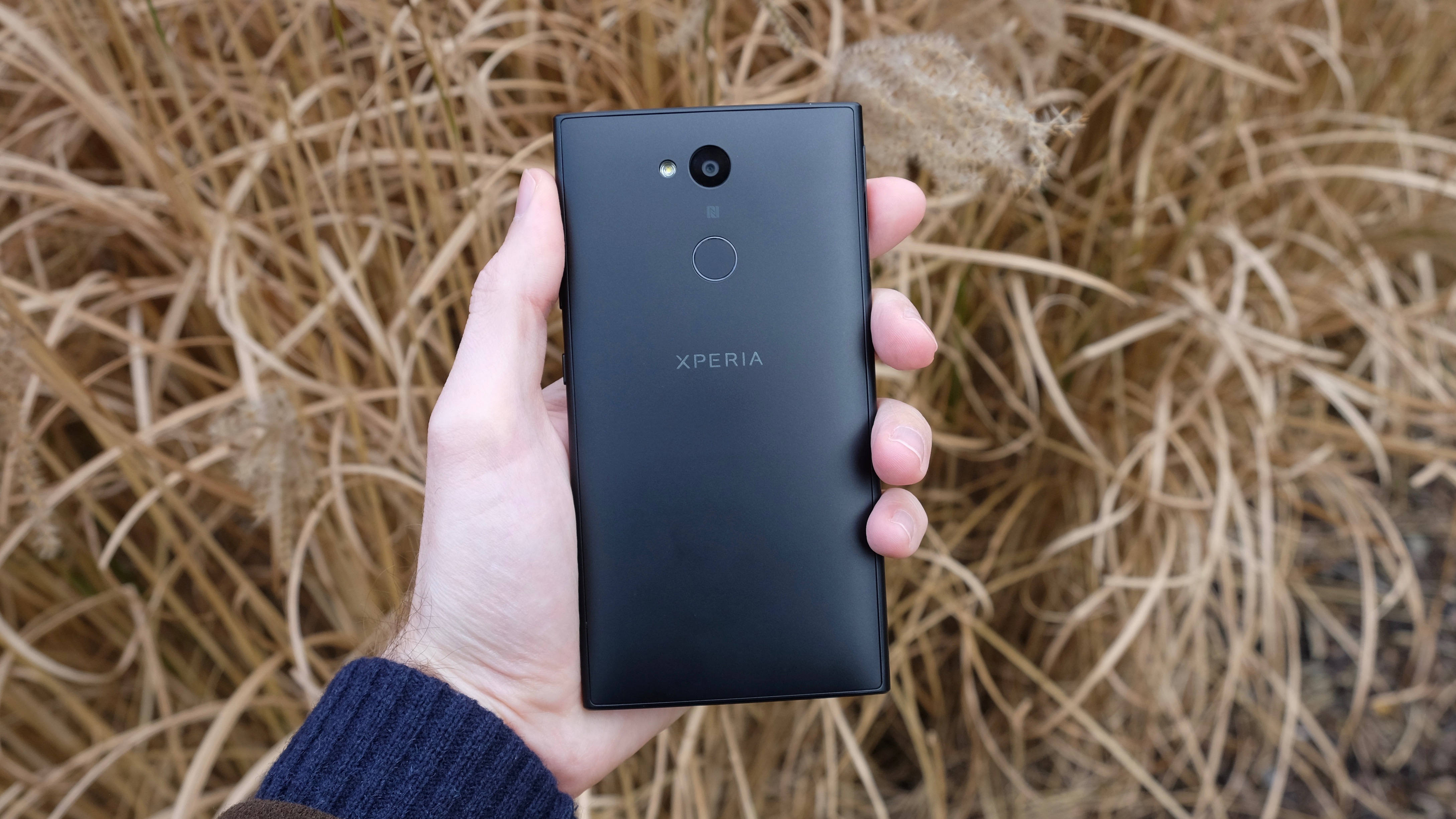
To give that some context, the famously solid iPhone X (this is potentially the only time these two phones will be compared) weighs 174g, and that's because it's made of glass and metal and has all manner of wondrous components inside.
We have no idea why the Xperia L2 is so hefty given that it's all plastic and very basic indeed.
While the Nokia 6 isn't far off the Xperia L2 at 169g, at least that phone has a premium all-metal build.
The phone is pretty sizeable when viewed head-on, too, with dimensions of 150 x 78mm. Budget phone users probably haven't grown accustomed to the wonderful world of bezel-free phones just yet, but the L2 is notably chunky wherever you're coming from.
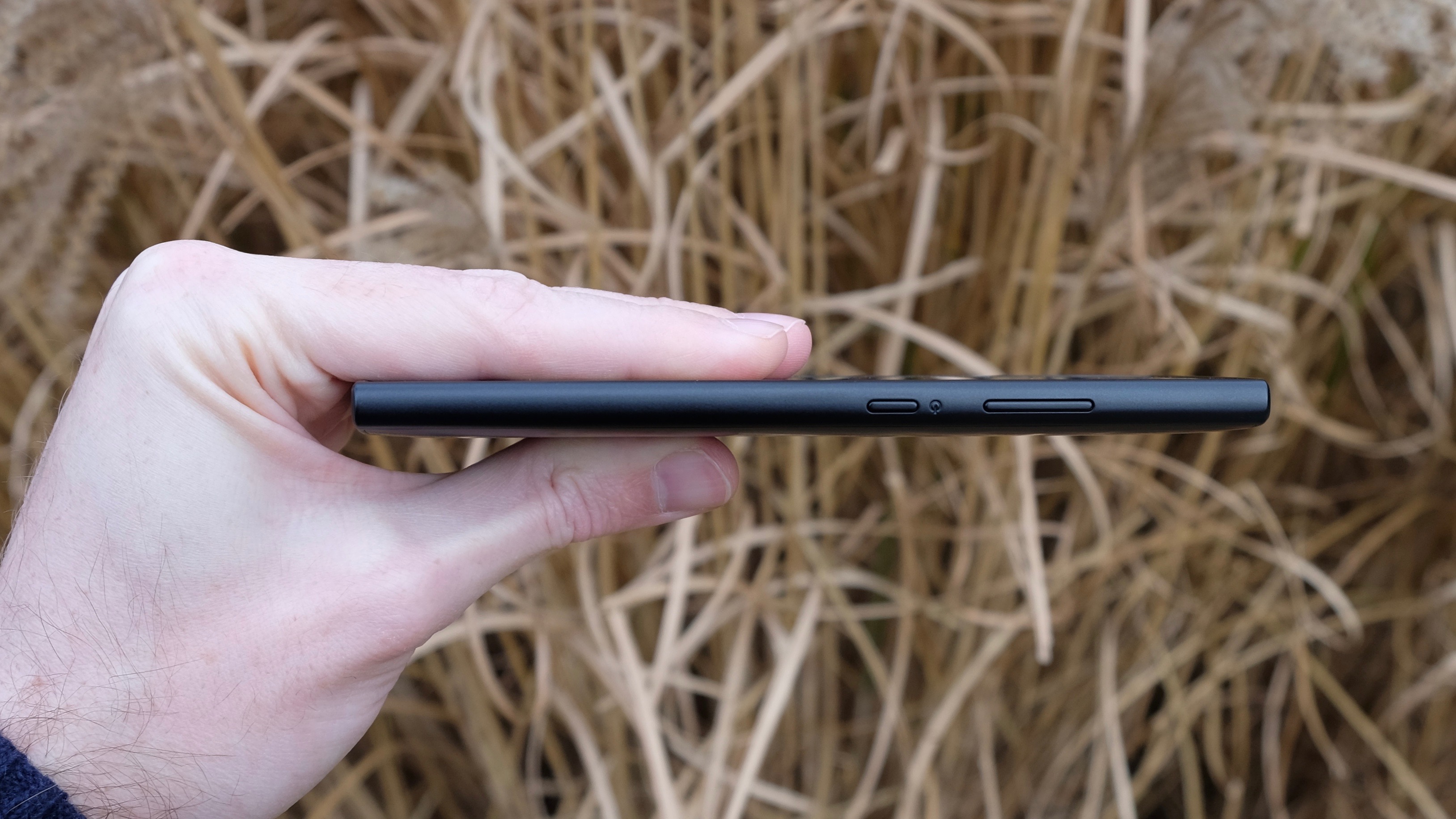
It has a thick chin and forehead, in particular. The latter is at least broken up by the ever-tasteful Sony logo and the aforementioned front-facing camera, but the bottom of the phone looks like so much wasted space. As is Sony's custom, there are no fixed home, back, and multitasking buttons on the L2.
The side bezels are pretty thick too, giving the phone's screen a pronounced picture frame look.
Talking of the Sony Xperia L2's 5.5-inch LCD display, it's just okay. It's plenty large enough, and the basic elements of brightness and color accuracy are alright for a phone of this price - though taking it outside dulls the display considerably.
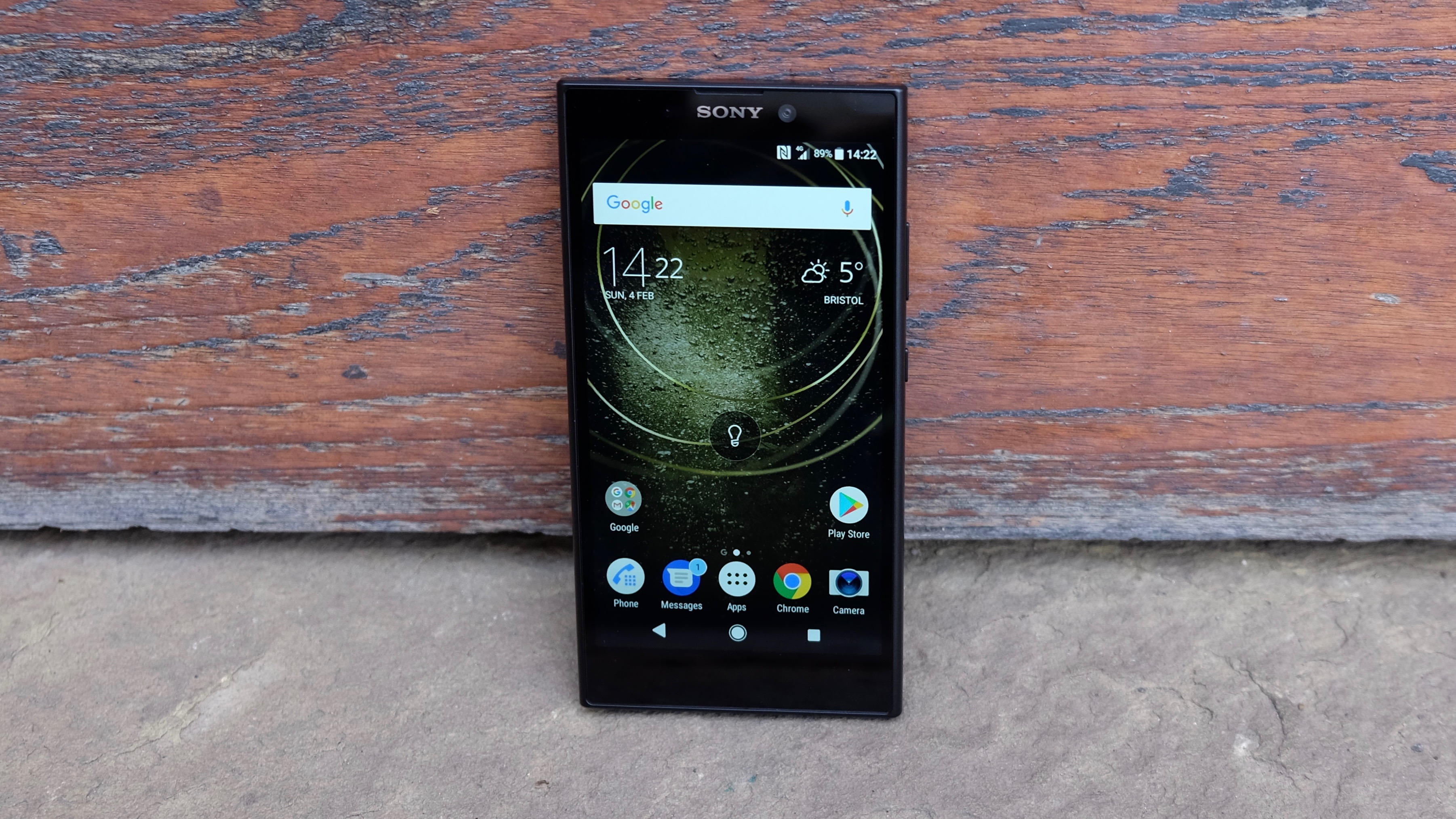
But it's a shame that once again Sony has gone with a 720p resolution, resulting in a less-than-ideal pixel density of 267ppi. Any modern phone with a display that tops 5-inches should ideally have a 1080p resolution by now.
As it stands, you can see individual pixels on the Xperia L2's screen without having to press your nose right up to it.
That's simply not an issue with the likes of the Moto G5 or the Nokia 6, both of which have 1080p displays.
We also noted the same build quality issue as the Xperia L1, in that medium pressure will yield a disconcerting ripple effect. You'd think with the extra weight that this phone is carrying that it would be a little more rigid.
On the positive side, Sony once again gives us an affordable phone that uses the modern USB-C connection standard, which is far from a given in this part of the market. And yes, there's a 3.5mm socket.
Battery life
- 3,300mAh battery
- Lasts well beyond a full day
The one big beneficiary of a pixel-thin display, of course, tends to be a phone's stamina. It's no surprise that the Sony Xperia L2 lasts a good spell between charges.
2017's Sony Xperia L1 was already a solid performer on the stamina front with similar hardware, though it only had a 2,620mAh battery. The Xperia L2 bumps that capacity up considerably to 3,300mAh, though performance is similar.
Our standard battery test is to run a looping 90-minute 720p video with the screen set to full brightness, and the Xperia L2 consistently used up 17% of a full charge.
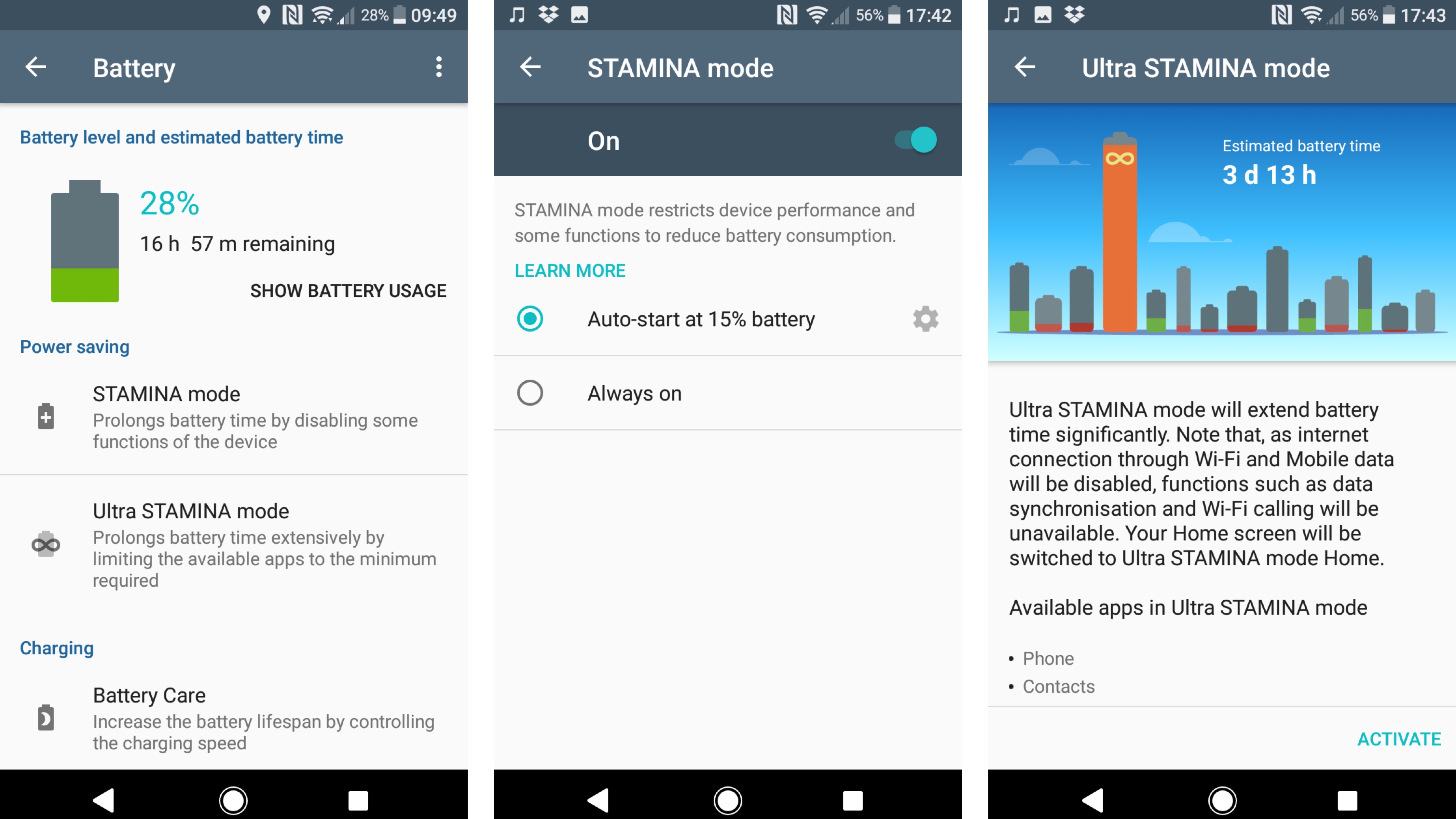
That compares very favorably to the Moto G5 and the Nokia 6, both of which lost 22%.
In terms of practical usage, it's quite possible to get through the best part of two days of light to moderate usage without charging. At the end of a day of light usage, with 15 to 20 minutes of 3D gaming and one of the aforementioned battery tests, we were left with around half a charge.
That 15 to 20-minute gaming session (it was Guns of Boom, a fast-paced online shooter) sapped just 7% of the L2's charge, which is pretty decent in itself.
Sony also goes further than most with its battery saving options, including both a Stamina Mode and Ultra Stamina Mode offering varying drastic cut backs on the phone's functions.
You also get Battery Care, which calculates when you regularly leave the phone on charge for prolonged spells (most likely overnight) and then charges slower at those times, helping to preserve your battery's full capacity.
Camera
- 13MP f/2.0 main camera
- 8MP wide-angle selfie cam
The Sony Xperia L2 comes equipped with a 13MP f/2.0 main camera, which is a more than respectable-looking spec for a budget phone. Sure enough, it's possible to get some nice results - provided the shooting conditions are ideal.
In such perfect situations you'll grab reasonably detailed shots with accurate colors, and even a pleasantly natural-looking depth of field effect if you've framed things a certain way.
We also liked the way Sony's camera UI would reliably lock onto objects with a flexible box-out when you touch them.
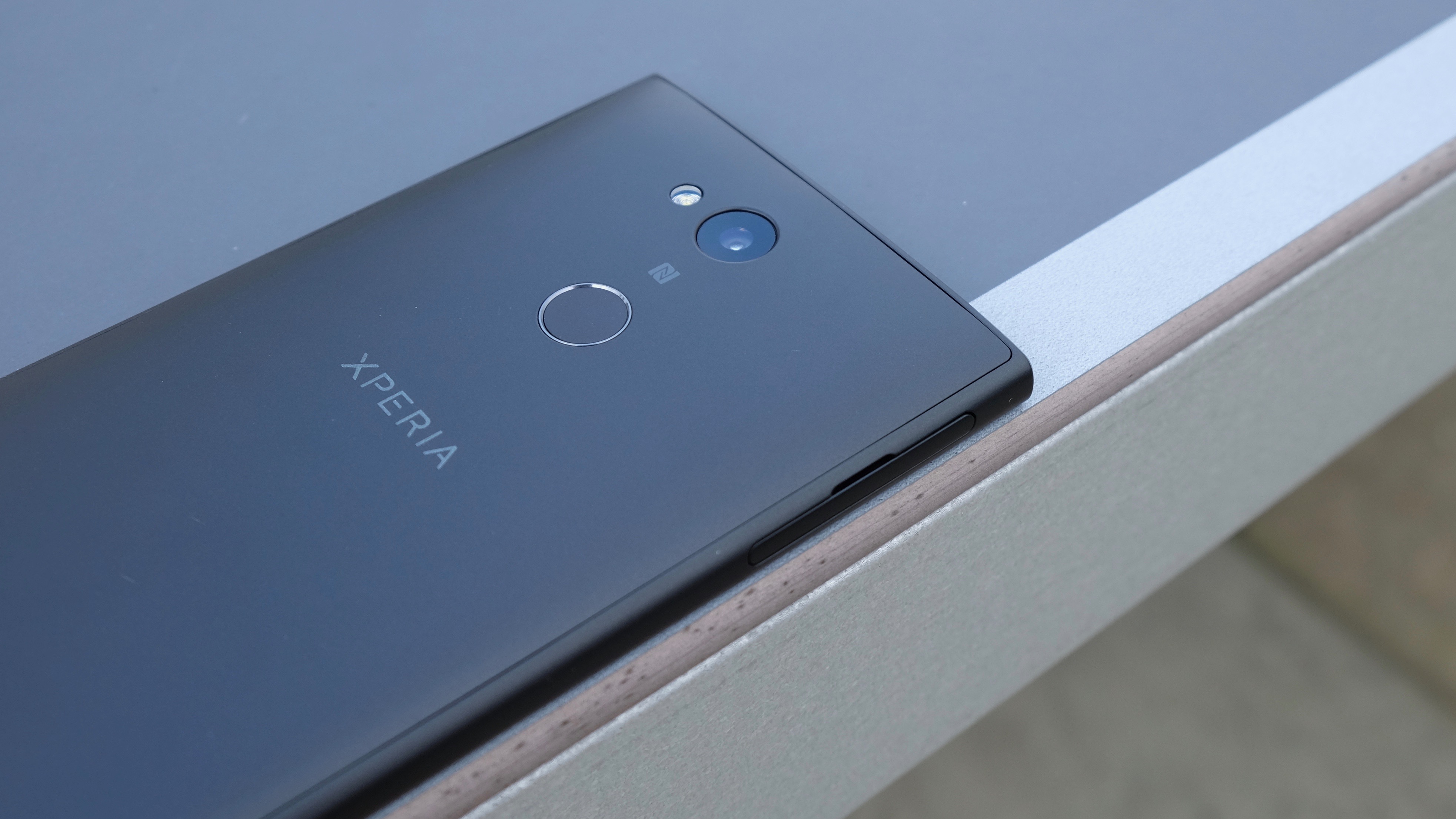
However, as any photographer knows, conditions are rarely ideal. The Xperia L2 struggles in lower lighting situations, which is normal for a low-end phone. It also doesn't deal with movement particularly well, as we noted a fair amount of blur on a slow-walking subject even in daylight conditions.
Speed seems to be a general issue here, both in terms of the shutter speed and the sluggishness of the autofocus system. You need to really carefully frame your shots, holding the phone perfectly still.
There is an HDR mode here, and it's pretty effective at balancing those washed out skies and deep shady areas that you otherwise get in Auto mode. However, it's tucked away as a toggle in the options menu of Manual mode, and of course such shots take the L2's creaky chipset an age to capture and process.
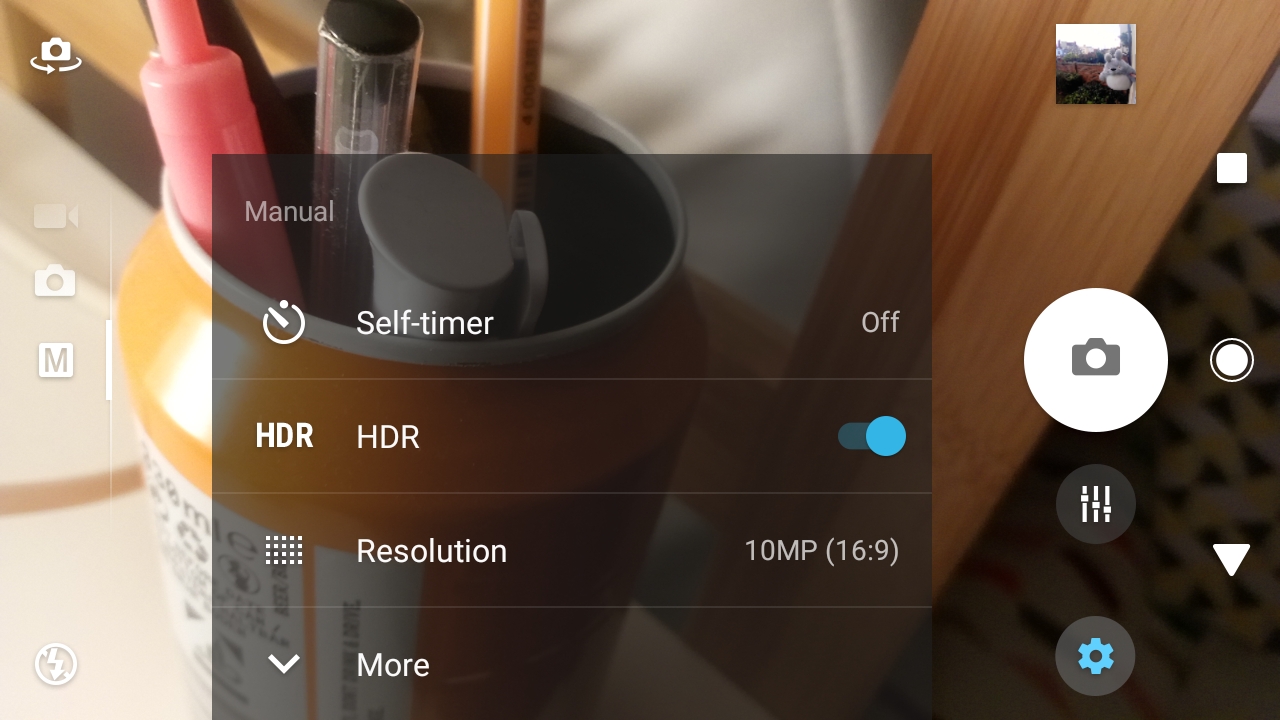
The Sony Xperia L2's camera offering is weighted more to the front unit, however. Sony has fitted the phone out with an 8MP super wide-angle (120-degree) front camera. As we mentioned earlier, this means that you can fit a whole lot more into your selfies - whether that's people or scenery.
The downside to this component is a slight fish-eye effect, which is particularly pronounced when you have buildings or some other straight-edged man-made structure in the background.
We're not sure why the abomination that is the Soft Skin Effect is turned on by default, either. Unless you really want to look like a mannequin in all your shots.
Camera samples
Interface and reliability
- Android 7.1
- Sony apps duplicate Google’s
The Sony Xperia L2 runs on an older version of Google's ubiquitous mobile OS, Android 7.1. Given that Android 8.0 Oreo hit general availability back in August 2017, that’s a bit of a disappointment - especially when you consider that the Sony Xperia L1 also shipped with Android 7.
That said, it's far from an outdated operating system, and Sony's custom UI is generally light and pleasant to use. It wisely refrains from messing with the drop-down notification and shortcut menu, which is one of Android's most enduringly great features.
Sony also sticks with the traditional app tray button at the bottom of the home screen, although once you enter this section things are a little different. Scrolling laterally through apps feels a little odd, though we suppose it's consistent with the home screen action.
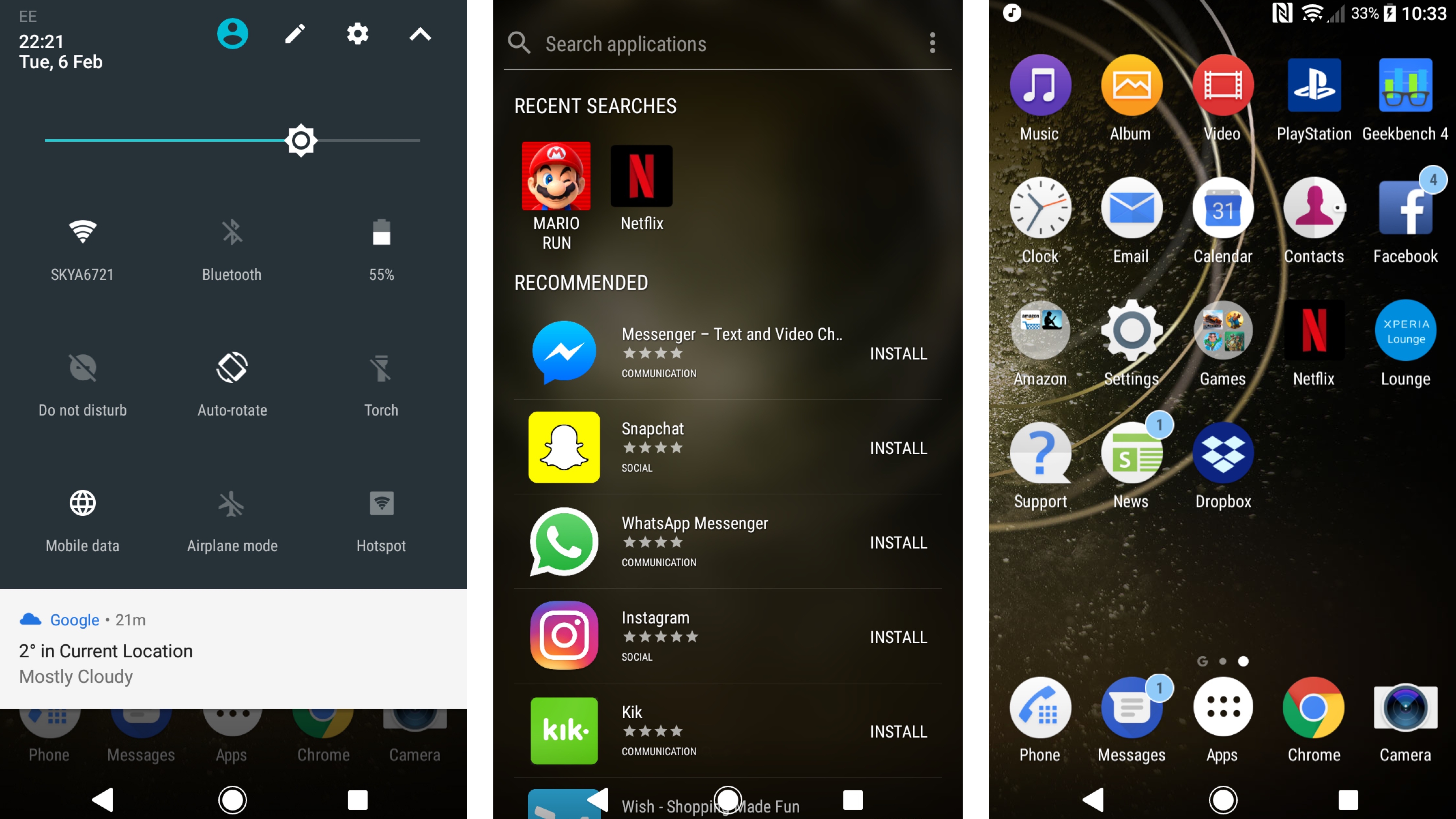
Swiping left from this app tray brings up Sony's app search function, which can also be accessed by swiping down on the middle of the home screen. This is an effective way of locating apps with a smart search function, though using the bulk of this screen to list recommended apps seems like a waste of space.
Sony makes a big play of the ability to operate the L2 with one hand, with a function that markedly shrinks the view towards either bottom corner. This inclusion is fine, but we found that the method of accessing it - by swiping up from either of those corners - clashed with the camera shortcut on the lock screen.
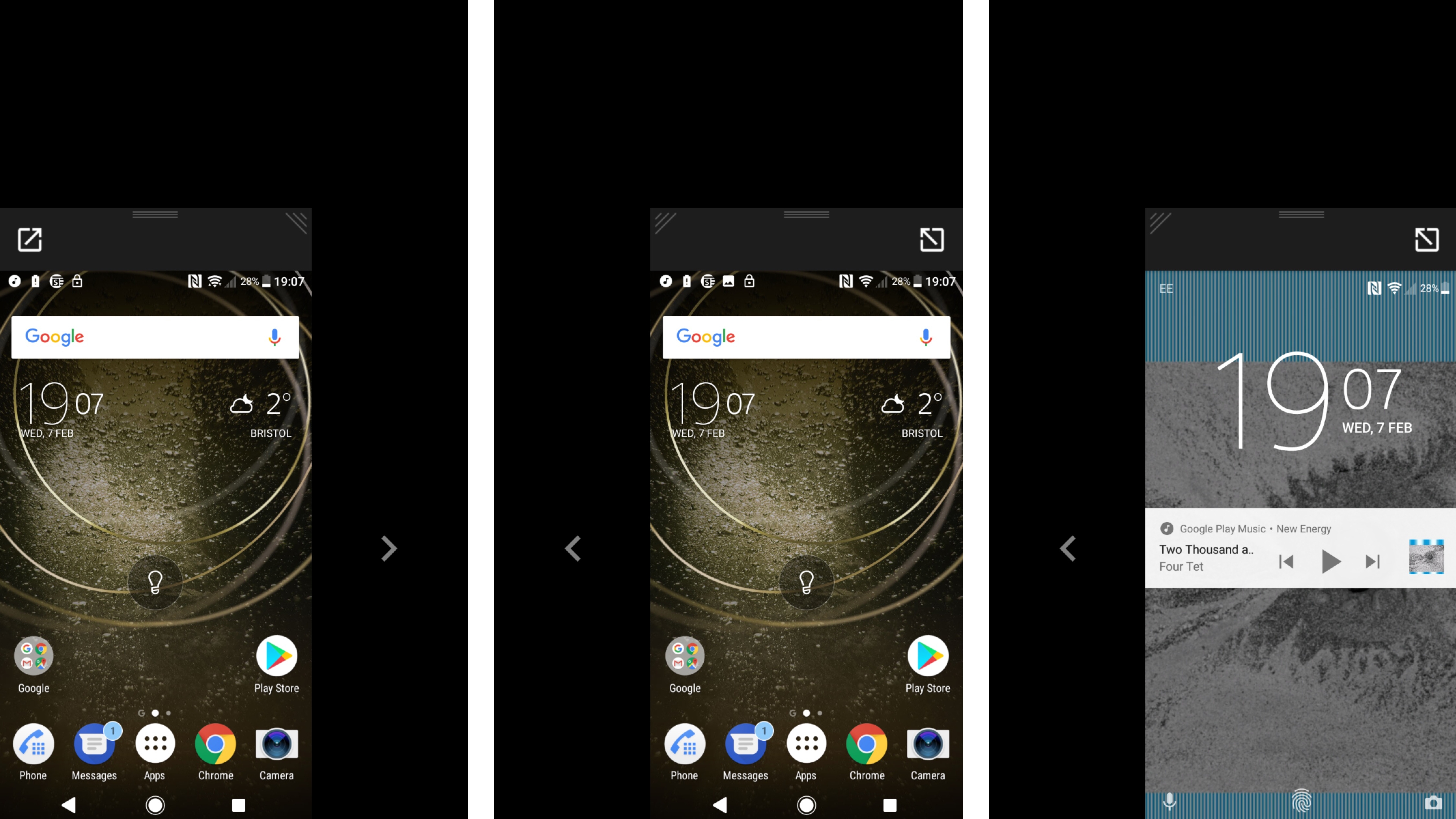
As it turns out you have to swipe left along the bottom of the screen to get the camera to boot up instead, but that’s not made immediately clear.
As always, you'll need to contend with Sony's own suite of apps. These include Sony's own Video, Music and Album apps, which is unsurprising given the size of the company’s media operations.
The simple fact, however, is that they all operate alongside Google's own Google Play Music, Google Photos and Play Movies & TV apps, which are all far better apps in most ways.
Sony also includes its own News app here, which is functional to pull together topical news stories, but it’s also far from the best effort of this kind. Flipboard does it way better.
Movies, music and gaming
- Display not sharp enough for movies or games
- Single speaker a little quiet
5.5 inches is a good size of screen for consuming visual media, but the Sony Xperia L2's meagre 720p resolution isn't ideal. It means that Full HD video content - pretty much the standard resolution for online sources like Netflix, Amazon and YouTube these days - isn't rendered at its best.
Sony can usually be relied upon to provide accurate colors, and the Xperia L2 doesn't disappoint on that front. Whether downloading a film from the Google Play store or streaming a TV episode through the Netflix app, everything looks natural - if a tiny bit washed out.
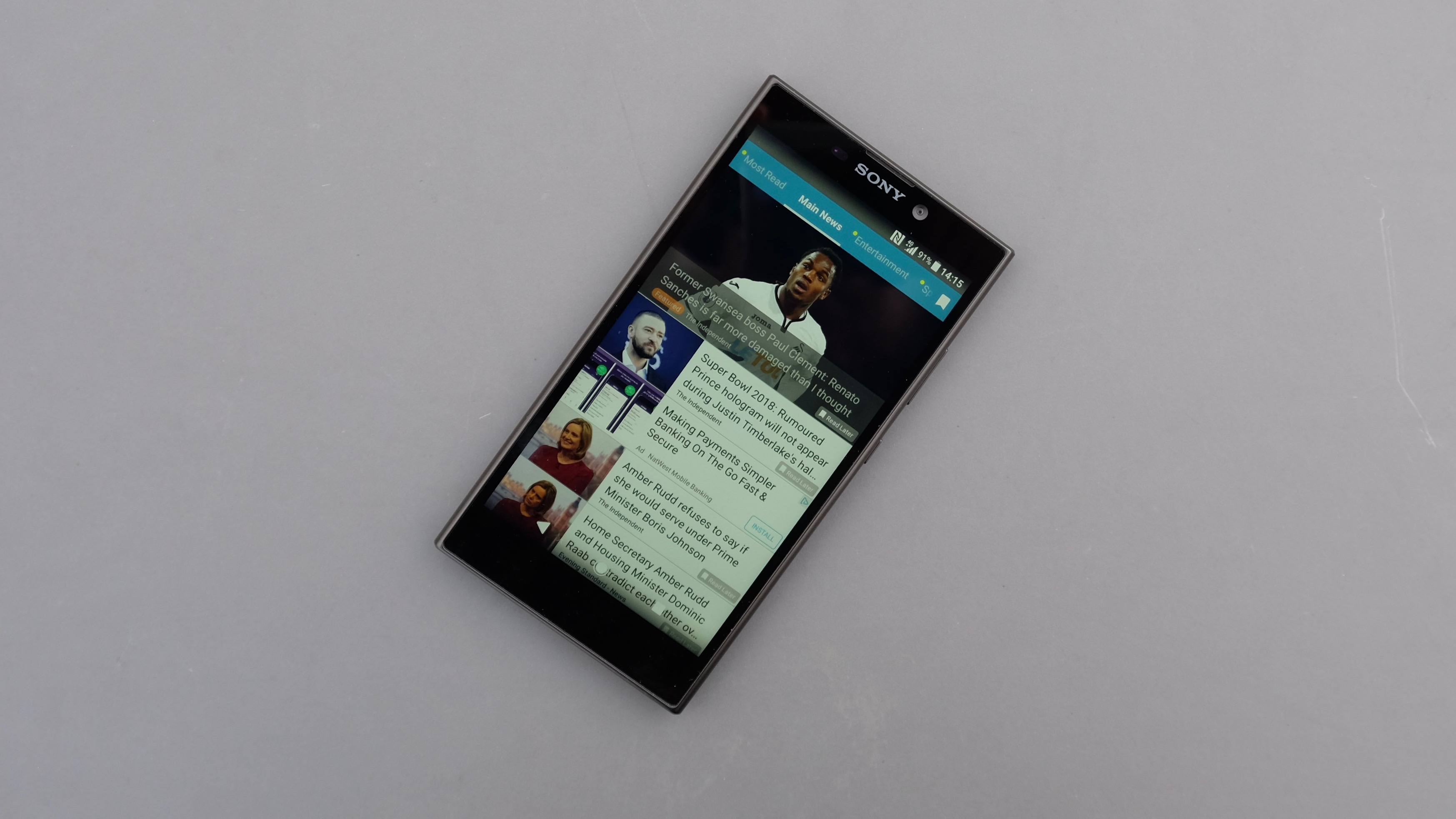
The same things can be said for games on the L2. They're presented at a good size and with decent color, but they're not rendered as sharply as they are on the Moto G5 and other 1080p rivals.
In terms of gaming performance the Xperia L2 holds its own, and that's probably at least partly down to the fact that there are fewer pixels to push around the screen. Guns of Boom ran pretty smoothly, except for some performance issues when first loading into a game.
Graphically rich racer Gear.Club ran adequately, but the graphics had clearly been scaled right down to the bare minimum for the L2's humble CPU. Also, UI and text elements visibly suffered from the downgrade in resolution.
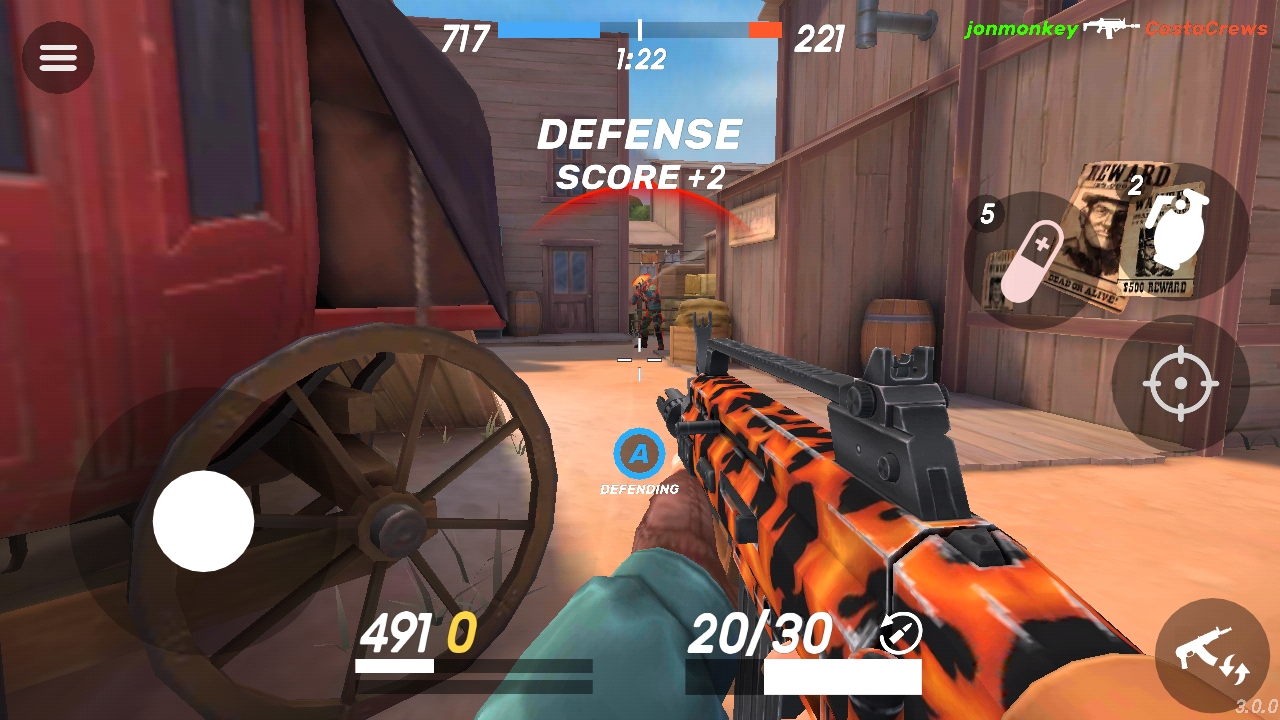
The Sony Xperia L2 fares much better with music, largely thanks to the Sony audio enhancements that we mentioned in a previous section.
The single speaker on the bottom of the phone isn't particularly great, and we found ourselves having to pump the volume right up to be able to hear video content properly, but it’s fine for short form content.
While the speaker's positioning towards one corner of the bottom edge isn't what you'd call optimal, it is far less prone to blockage with your finger than many phones worth much more money.
Also positive is the fact that you have 32GB of internal storage to play with as standard, which is a good amount for a budget phone. It's also double the amount we got with the L1, and is enhanced further by the provision of a microSD slot.
Specs and benchmark performance
- Quad-core MediaTek MT6737T isn’t up to much
- 3GB of RAM helps things along
Even at this humble end of the market, the Sony Xperia L2 finds itself a little under powered. It runs on the exact same MediaTek MT6737T quad-core chipset that powered 2017's Sony Xperia L1, and that felt rather sluggish back then.
You do at least get 3GB of RAM this time around, which is a 50% increase, and its effect on general performance and smoothness shouldn't be underestimated.
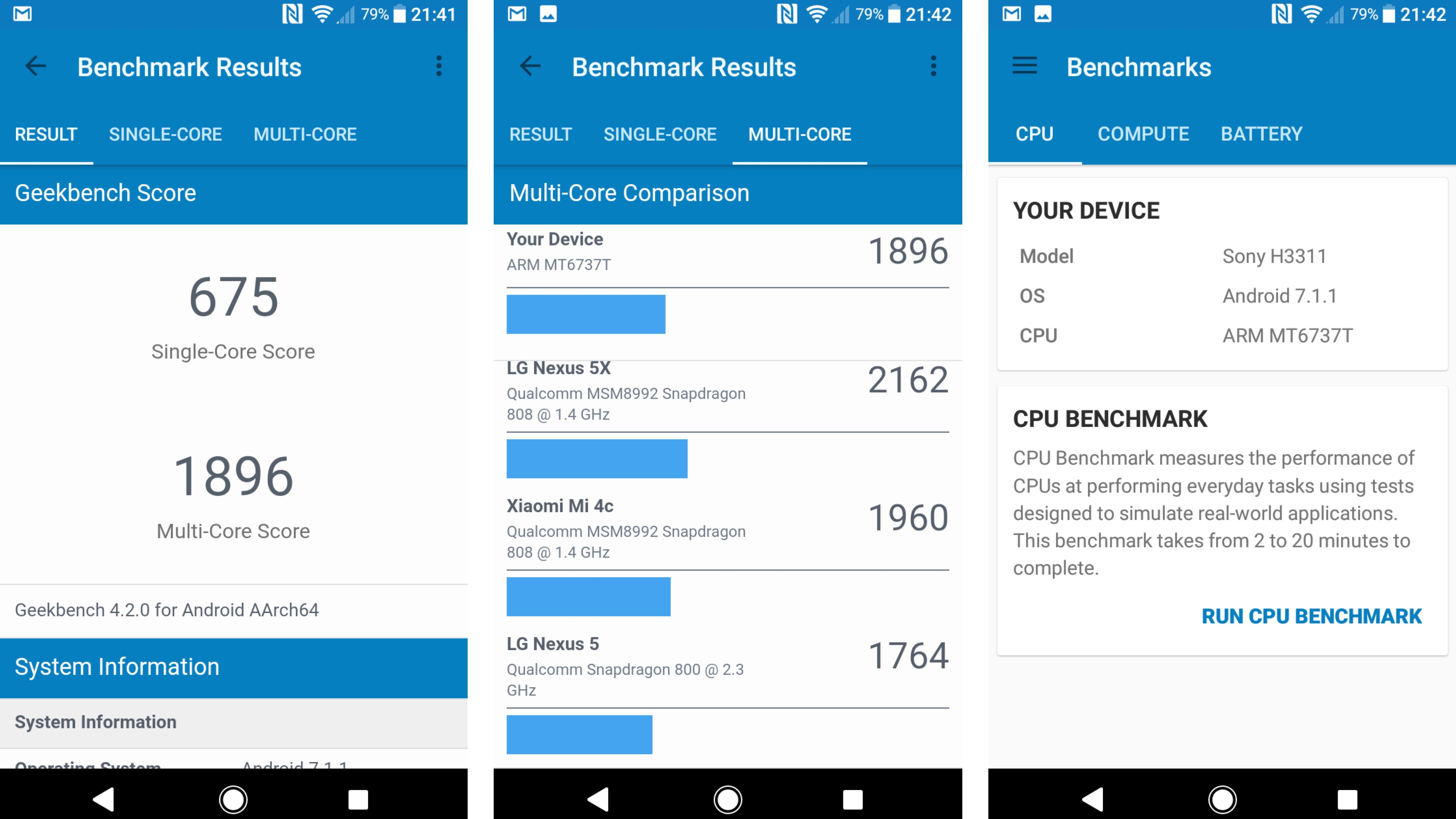
Still, the Xperia L2 comes up short of phones like the Moto G5 and Wileyfox Swift 2 Plus with their more mainstream Snapdragon 430 chips. An average Benchmark 4 multi-core score of 1,881 for the L2 falls well short of both the G5 (2,377) and the Swift 2 Plus (2,073).
You can sense this performance shortfall in general use, too. The Sony Xperia L2 is okay in general navigation, but it occasionally feels like you've caught it napping when you suddenly wake it and jump into an app or pull up a menu.
It's nothing major - just a slight pause in the UI animation or a moment of blank screen - but it all adds up to an experience that doesn't feel premium.
Verdict
The Sony Xperia L2 is a solid but deeply unremarkable $250/£200-ish smartphone that fails to offer much of value over its direct rivals.
Its hefty plastic build, low-res display, and mediocre chipset don't offer a bad experience, but nor do they compare favorably with the likes of the Moto G5 and the Nokia 6.
Sony has at least included a fingerprint sensor with this year's budget effort, but it's not a particularly great one. Meanwhile things like a wide-angle front-facing camera and audio enhancement options will only be of limited use to relatively small niches of people.
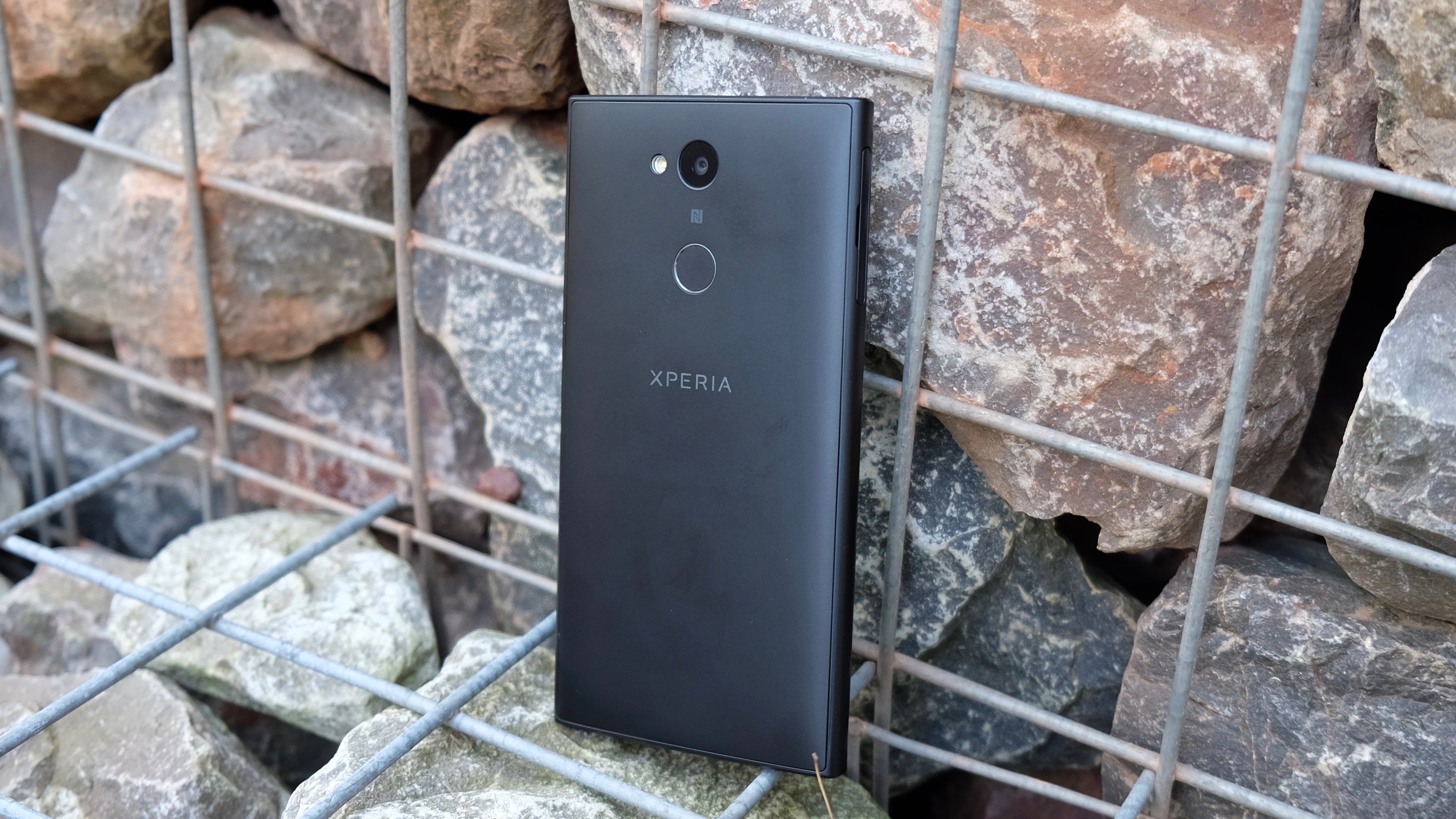
Who's this for?
If you're an audio obsessive who's on a strict smartphone budget, the Xperia L2 might be worthy of consideration, as it lets you personalize and enhance the audio profile.
Similarly, if you're a selfie fanatic who struggles to squeeze everything (or everyone) into your shots, the L2 can help you out.
Should you buy it?
With a price that (at the time of writing) makes it more expensive than the best budget phones in the business, it's difficult to make a case for buying the Sony Xperia L2.
The Moto G5, Nokia 6 and Wileyfox Swift 2 Plus are each sleeker, have sharper displays, and pack more capable chipsets than the Xperia L2. They also run more 'pure' versions of Android.
Read more about these alternatives below.
Moto G5
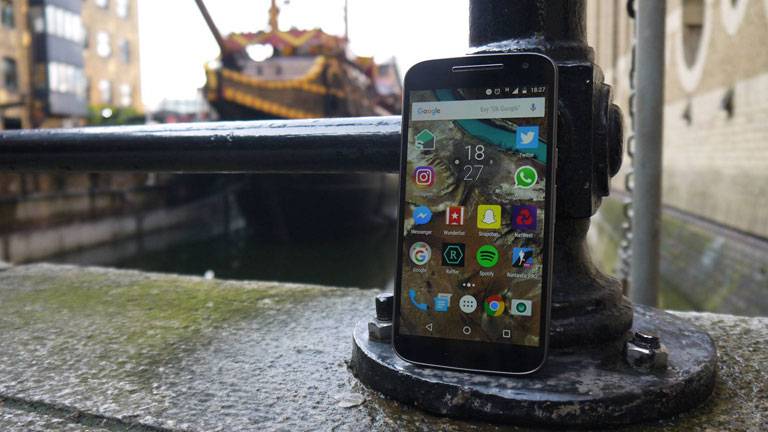
It gets a little repetitive comparing new phones to the Moto G family, but the fact remains that this is the gold standard for affordable handsets to measure themselves against.
The Moto G5 is just such an easy phone to live with. It's well built, with a sturdy metal(ish) body, and its 5-inch display packs in the pixels with a 1080p resolution.
Its Snapdragon 430 CPU is more powerful than the L2’s, and we'd take Motorola's near-stock take on Android over Sony's any day.
- Read the full Moto G5 review
Nokia 6
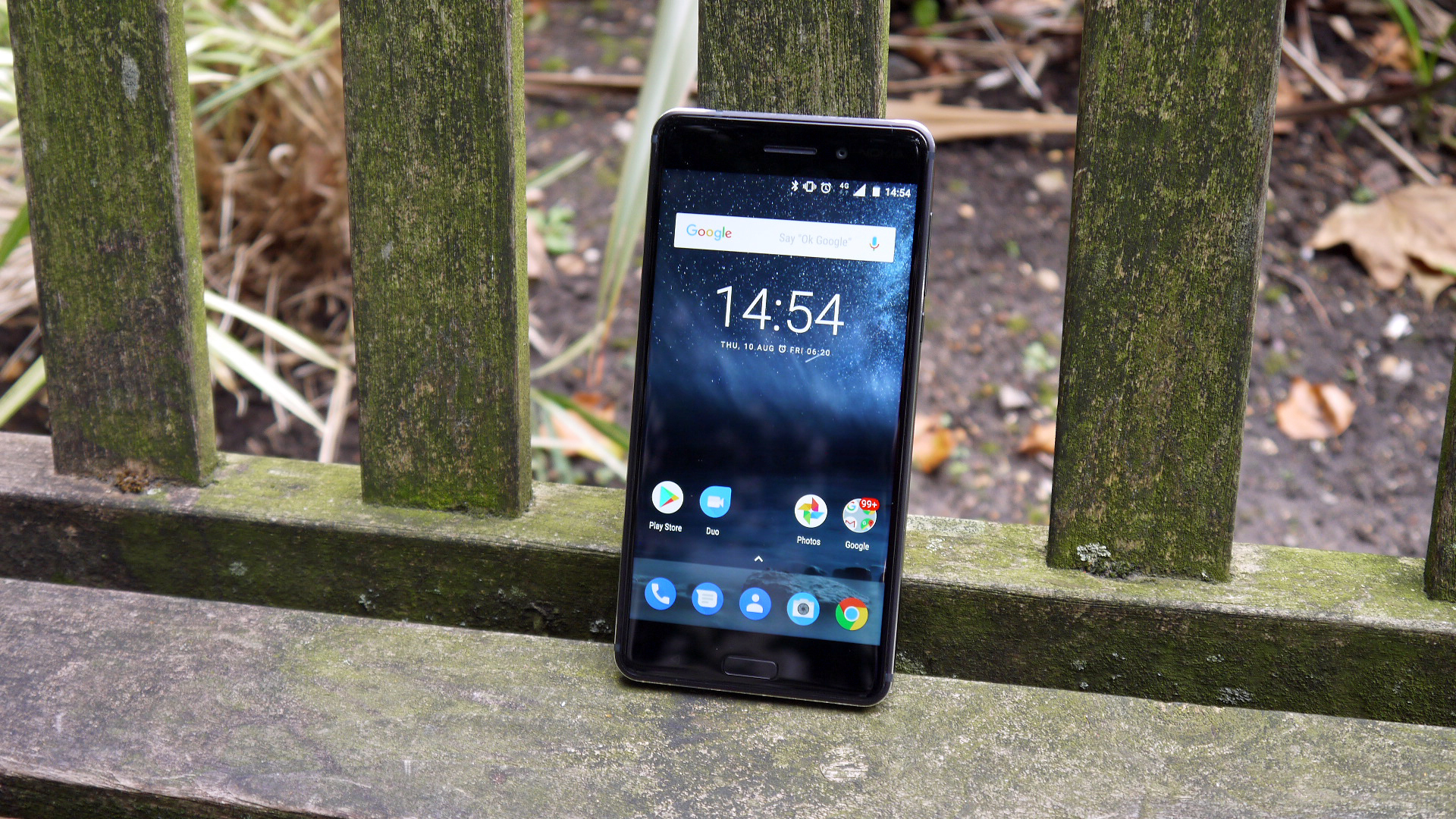
Nokia’s return has brought a dose of class to the lower end of the smartphone market, particularly with the Nokia 6.
The phone’s all-metal unibody design is head and shoulders above the bulky plastic L2, while the Nokia 6’s 5.5-inch 1080p display is considerably sharper.
Like the Moto G5, it too runs on the Snapdragon 430, which is a more capable all-round chip than the MediaTek effort in the Xperia L2. Also like the Moto, the Nokia 6 runs on a near-stock version of Android.
- Read the full Nokia 6 review
Wileyfox Swift 2 Plus
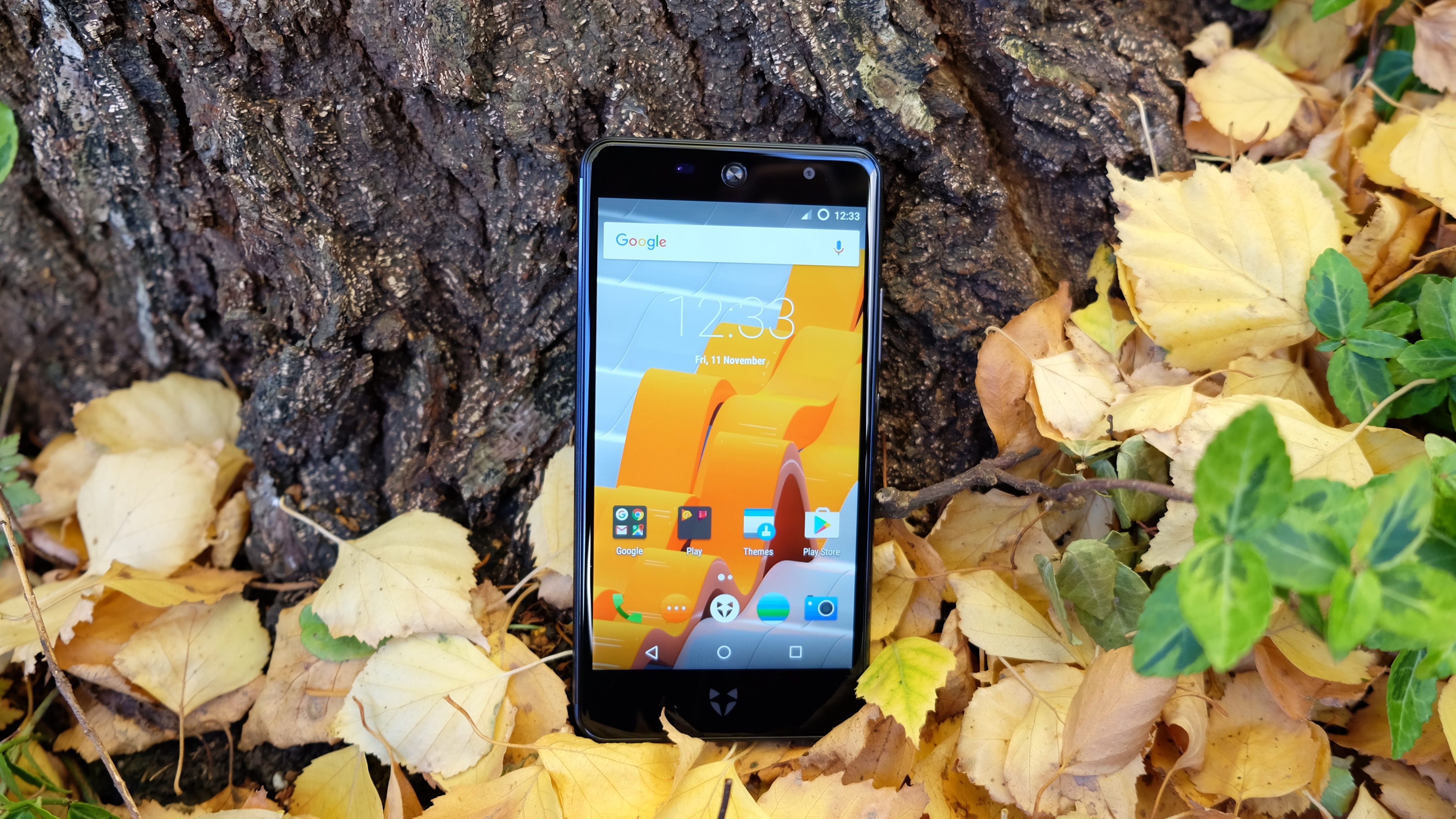
The Wileyfox Swift 2 Plus is another surprisingly classy budget phone that makes the Xperia L2 look a little cumbersome by comparison.
It too has a 720p display, but here that’s less of an issue thanks to its more compact 5-inch size. Like the two other rivals mentioned above, the Swift 2 Plus runs on the superior Snapdragon 430.
Also like the other two phones, the Swift 2 Plus has a much more reliable fingerprint sensor than the L2.
- Read the full Wileyfox Swift 2 Plus review
First reviewed: February 2018
0 comments:
Post a Comment